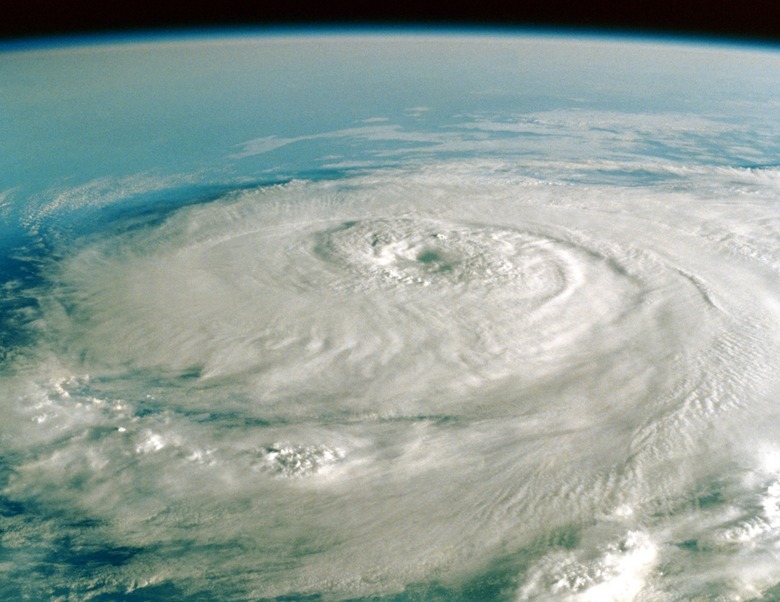Who Is In Charge Of Naming Hurricanes?
The practice of naming hurricanes dates back hundreds of years. Because hurricanes are powerful storms that can last for weeks and travel hundreds of miles, giving each one a name allows forecasters to give simpler warnings and information to the public regarding these dangerous events. Over the years, the authority for naming these storms has changed hands multiple times.
Origins
Origins
Originally, there was no central authority for naming hurricanes. In the West Indies, if a storm struck on or near a particular saint's feast day, the public would often refer to the storm with that saint's name. Other storms picked up the names of mythological creatures or other figures. In the early 20th century, an Australian forecaster took to naming storms after particularly disliked politicians in his country, allowing weather reporters to crack double-entendre jokes about the behavior of the storms.
U.S. Weather Bureau
U.S. Weather Bureau
In 1950, the U.S. Weather Bureau began naming systems that reached tropical storm levels. Because the USWB was an outgrowth of the military, the first naming systems used the military phonetic alphabet, calling the first storm Able, the second Baker and so on. Changes in the phonetic alphabet led the bureau to adopt a system of using women's names in 1953, beginning with Alice. By 1960, the weather bureau had four rotating lists of names in alphabetical order, leaving out names beginning with Q, U, X, Y and Z. In this system, the bureau numbered each tropical depression, only assigning the storm a name if it reached tropical storm strength with wind speeds of at least 35 knots (40 mph). The bureau also started the practice of retiring the names of storms that caused significant damage or loss of life.
National Oceanographic and Atmospheric Administration
National Oceanographic and Atmospheric Administration
In 1970, the United States created the National Oceanographic and Atmospheric Administration, an organization concerned with the condition of the water and air on the planet. Weather forecasting became a part of NOAA's responsibilities, and in 1972, the organization instituted nine new hurricane name lists, still using women's names for the storms. Under pressure from women's groups and international organizations, the NOAA ceded the authority to name hurricanes to the World Meteorological Organization in 1977.
World Meteorological Organization
World Meteorological Organization
In 1978, the World Meteorological Organization began a new practice of naming hurricanes, alternating male and female names for storms in the Pacific. The 1979 season saw male names used in the Atlantic for the first time as well, beginning with Bob. The WMO generated six yearly lists of hurricane names, including some Spanish and French names to represent the other cultures prominent in the areas affected by the storms, and continued the practice of retiring particularly infamous names. In 2002, the organization began assigning names to tropical depressions that seemed likely to rise to tropical storm status, a practice that saw the list exhausted during the busy 2005 hurricane season. After Hurricane Wilma, the organization named the remaining six storms using letters from the Greek alphabet.
References
- NOAA: National Hurricane Center: Tropical Cyclone Naming History and Retired Names
- NOAA: Atlantic Oceanic and Meteorological Laboratory: How are Tropical Cyclones Named?
- Hurricane Science: Hurricane Naming and Numbering
- National Weather Service: National Hurricane Center: Tropical Cyclone Names
- Mother Nature News: How Hurricanes are Named (and Why)
Cite This Article
MLA
Kazmeyer, Milton. "Who Is In Charge Of Naming Hurricanes?" sciencing.com, https://www.sciencing.com/charge-naming-hurricanes-5122/. 25 August 2017.
APA
Kazmeyer, Milton. (2017, August 25). Who Is In Charge Of Naming Hurricanes?. sciencing.com. Retrieved from https://www.sciencing.com/charge-naming-hurricanes-5122/
Chicago
Kazmeyer, Milton. Who Is In Charge Of Naming Hurricanes? last modified March 24, 2022. https://www.sciencing.com/charge-naming-hurricanes-5122/
